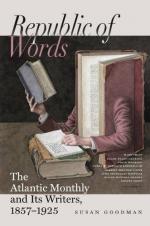Bessemer process for producing ingots of any size at
about the cost of wrought-iron. These and other
makes of low-steel have endured extraordinary tests
in the form of small guns and other structures subject
to concussion and strain; and both the theory and all
the evidence that we have promise its superiority for
gun-metal. But another element of resistance
is required in guns with thick walls. The explosion
of the powder is so instantaneous that the exterior
parts of the metal do not have time to act before
the inner parts are strained beyond endurance.
In order to bring all parts of a great mass of metal
into simultaneous tension, Blakely and others have
hooped an inner tube with rings having a successively
higher initial tension. The inner tube is therefore
under compression, and the outer ring under a considerable
tension, when the gun is at rest, but all parts are
strained simultaneously and alike when the gun is
under pressure. The Parrott and Whitworth cannon
are constructed on this principle, and there has been
some practice in winding tubes with square steel wire
to secure the most uniform gradation of tension at
the least cost. There is some difficulty as yet
in fastening the wire and giving the gun proper longitudinal
strength. Mr. Wiard, of New York, makes an ingenious
argument to show that large cannon burst from the
expansion of the inner part of the gun by the heat
of frequent successive explosions. In this he
is sustained to some extent by Mr. Mallet, of Dublin.
The greater the enlargement of the inner layer of
metal, the less valuable is the above principle of
initial tension. In fact, placing the inner part
of the gun in initial tension and the outer part in
compression would better resist the effect of internal
heat. But Mr. Wiard believes that the longitudinal
expansion of the inner stratum of the gun is the principal
source of strain. A gun made of annular tubes
meets this part of the difficulty; for, if the inner
tube is excessively heated, it can elongate and slip
a little within those surrounding it, without disturbing
them. In fact, the inner tube of the Armstrong
gun is sometimes turned within the others by the inertia
of the rifled projectile. On the whole, then,
hooping an inner steel tube with successively tighter
steel rings, or, what is better, tubes, is the probable
direction of improvement in heavy ordnance. An
inner tube of iron, cast hollow on Rodman’s plan,
so as to avoid an inherent rupturing strain, and hooped
with low-steel without welds, would be cheaper and
very strong. An obvious conclusion is, that perfect
elasticity in the metal would successfully meet all
the foregoing causes of rupture.




